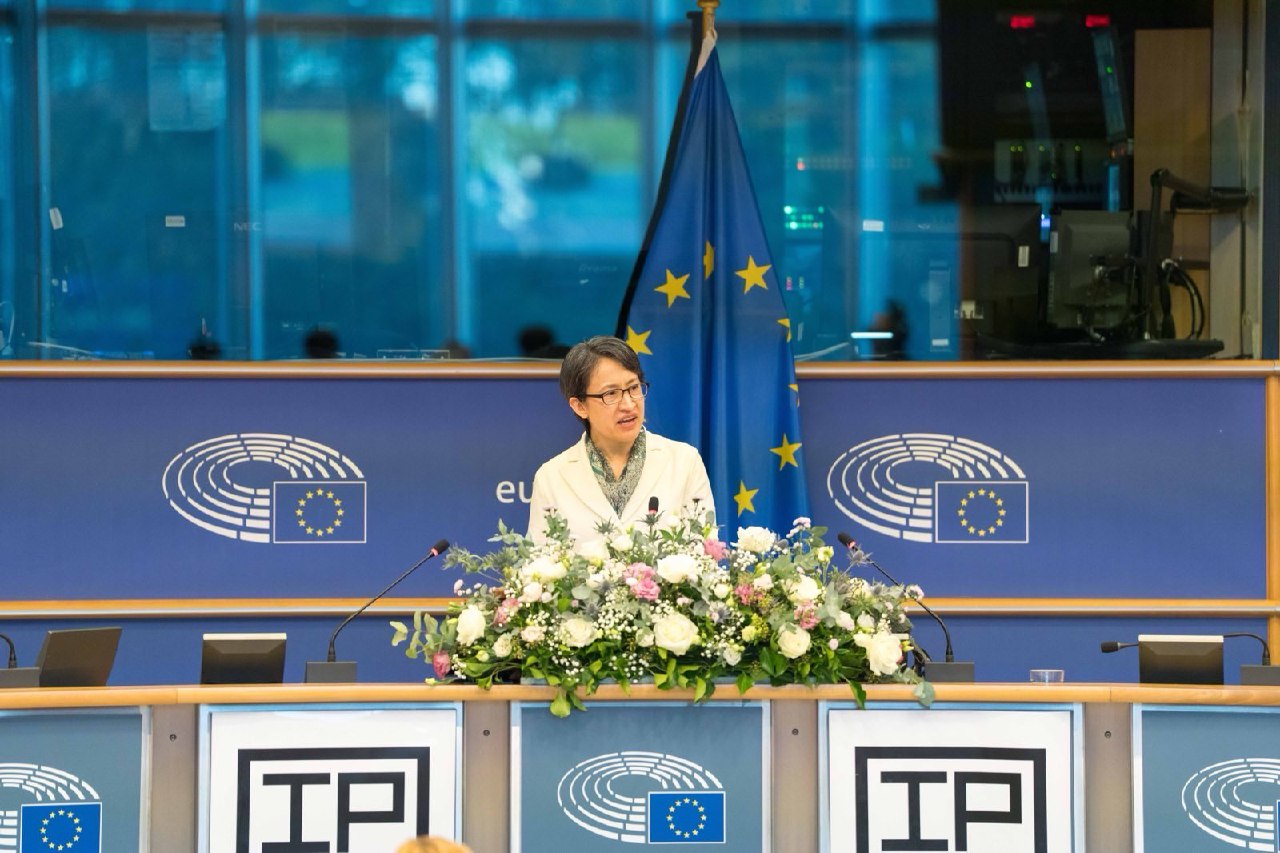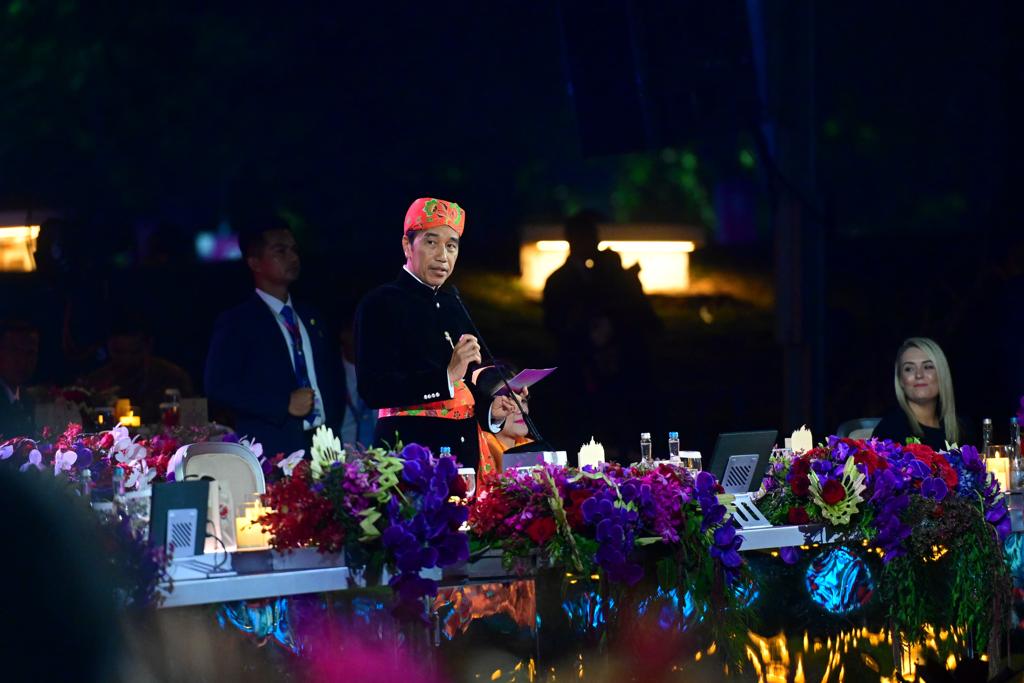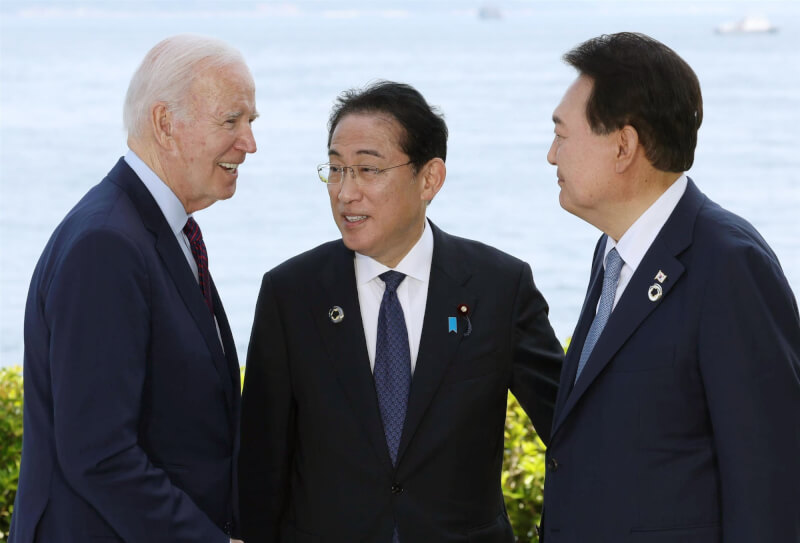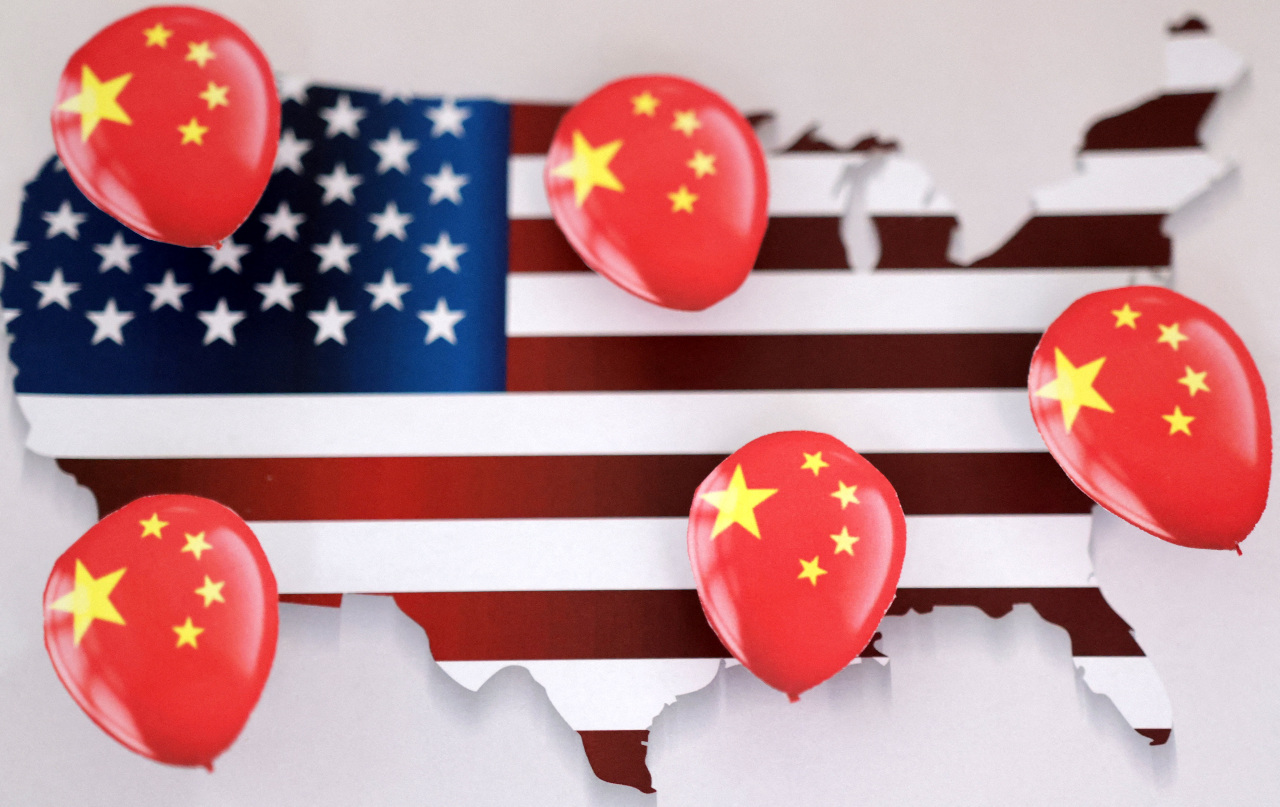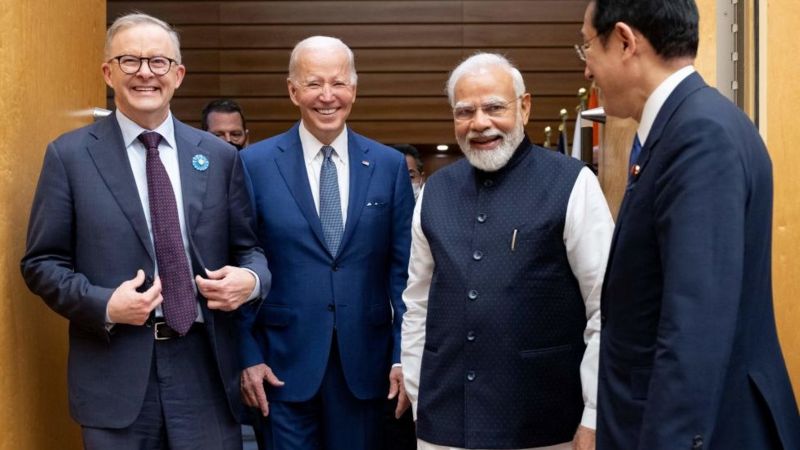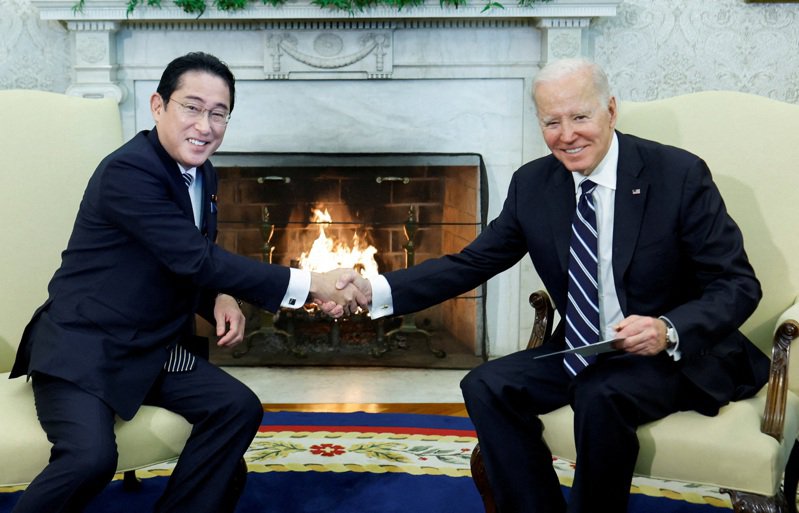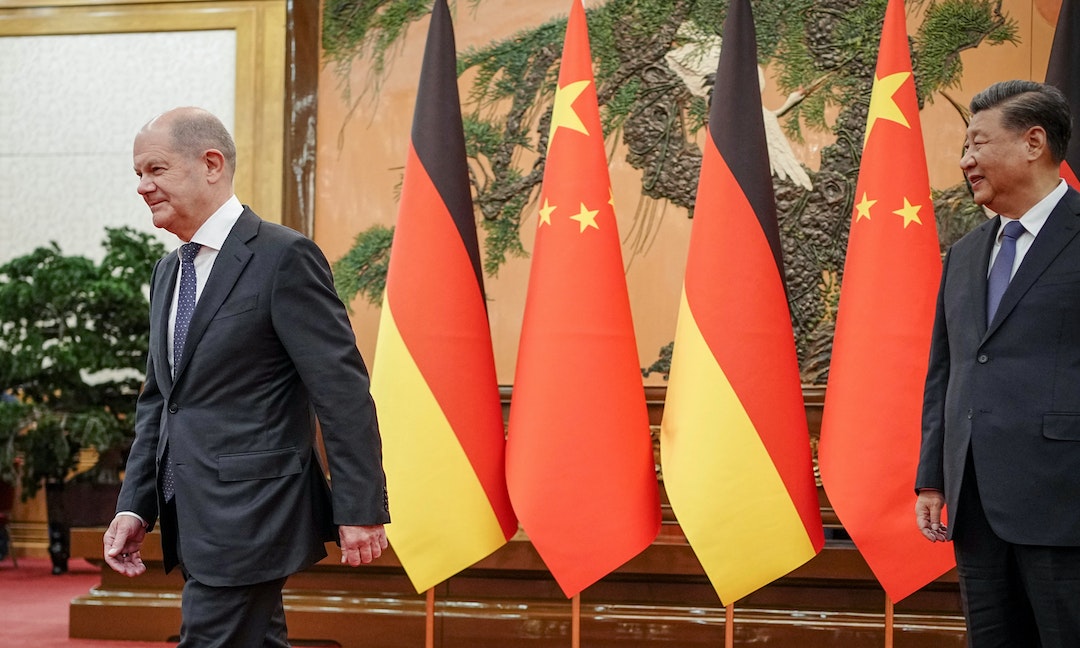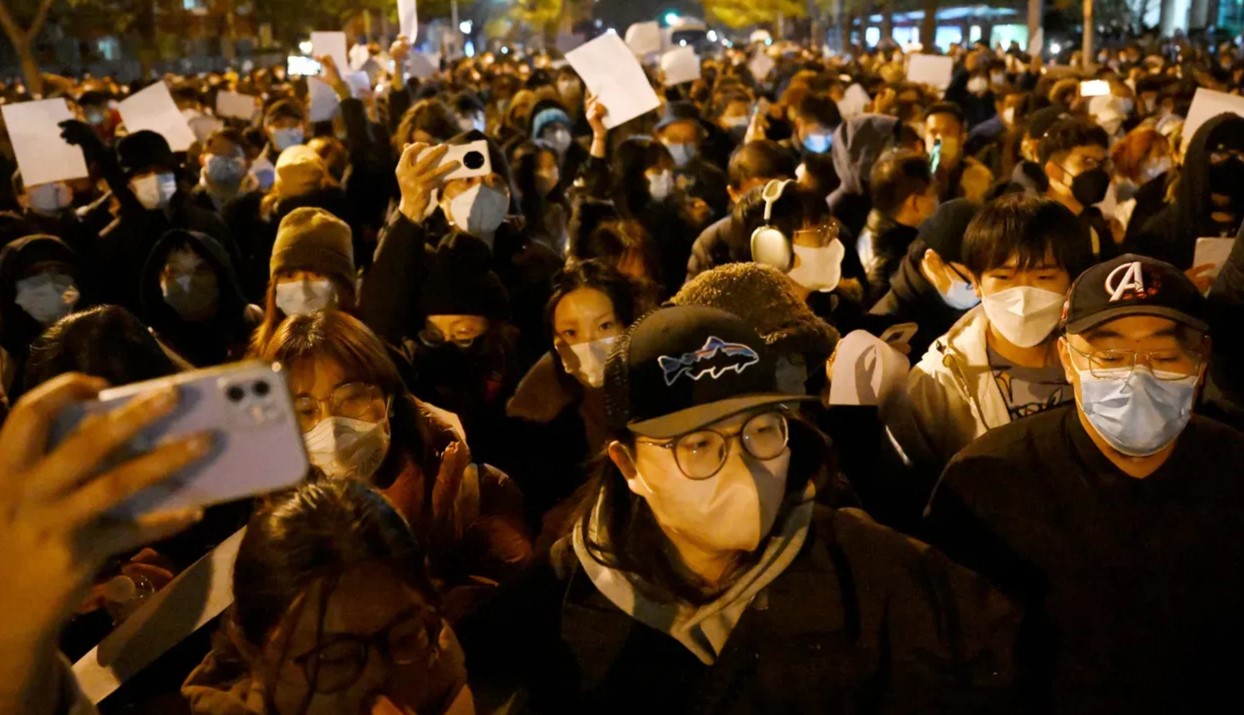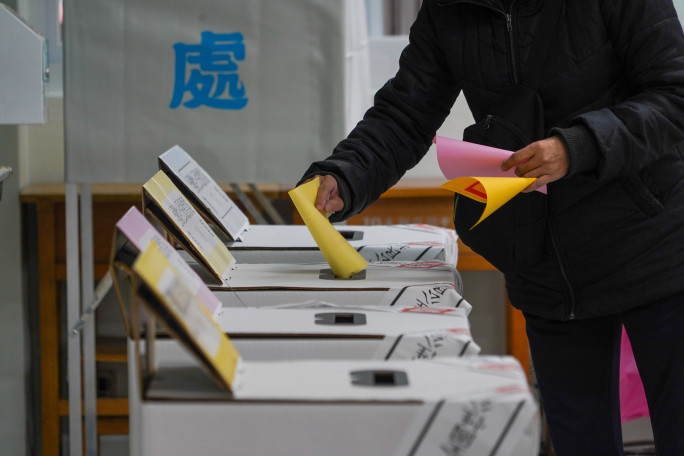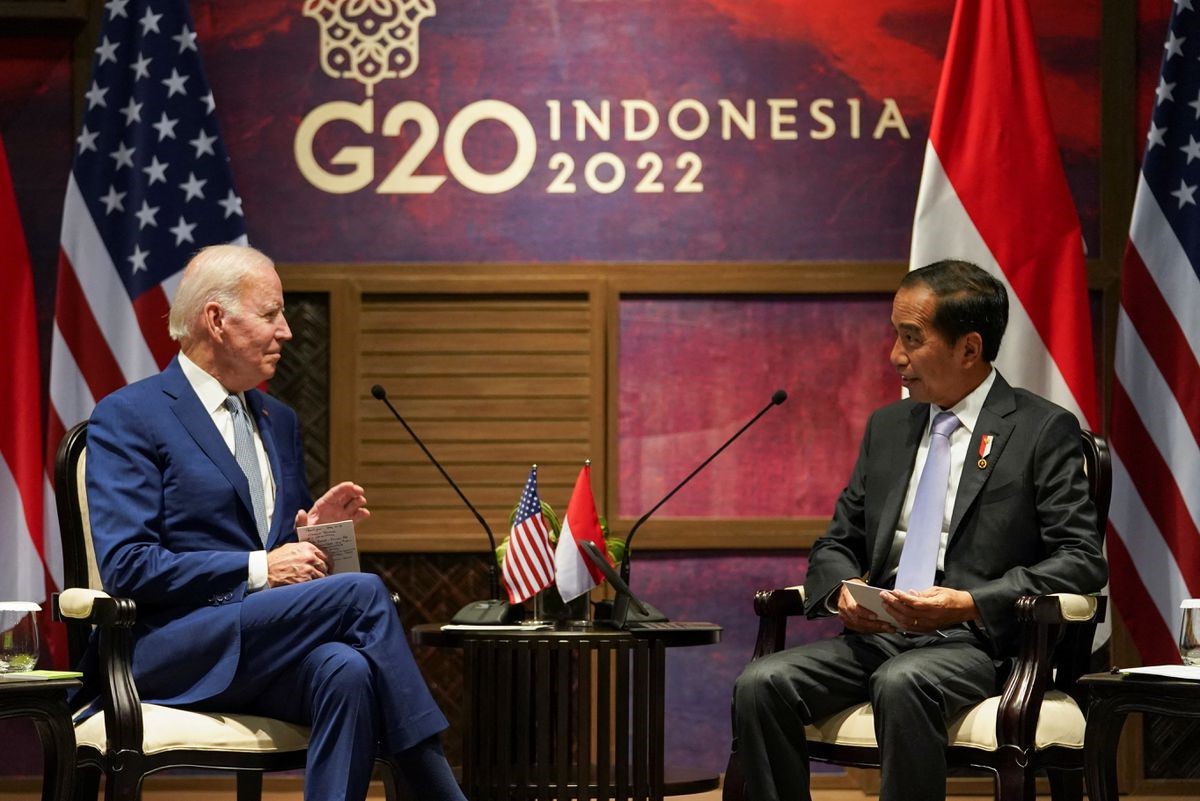Executive Summary
The post-World War II liberal international order characterized by the U.S. leadership, its alliances both in Europe and Asia, free trade, democratic partnerships, rule-making, and multilateral institution-building, among other features, is facing an intense crisis of governance and faith.
China has amped up its economic, military, and technological advances with the intent to undermine the U.S.-led existing order and to create a new China-led international order. For this purpose, it is looking to rebuild partnerships across the world, particularly in the so-called Global South— covering Latin America, West Asia, Africa, and Asia, among others in the developing and emerging world. While China’s influence has been on the rise among these states, its ties in Europe have been deteriorating primarily due to China’s coercive economic and diplomatic policies. In this context, the growth in transatlantic ties could be crucial to rebuilding an effective, representative liberal international order that is relevant in the new era.
At the recent NATO summit in The Hague, a major shift came from U.S. President Donald Trump, who now acknowledges NATO’s relevance to the U.S. This change followed a strong signal from European allies committing nearly 5 percent of GDP to defense, compelled by Trump and fears of the security threat posed by Russia.
While it is unclear if Trump’s new stance will last, the summit’s renewed focus on burden sharing marks a significant moment in NATO’s ongoing evolution. And it again brings forth the question of how important is EU U.S. cooperation in strengthening the liberal international order? And concurrently, what is the significance of the Indo-Pacific region in reinvigorating the liberal international order?
This publication—a part of a joint project by The Prospect Foundation (PF), the Institute for Security and Development Policy (ISDP), and the Kajima Institute of International Peace (KIIP)—is the second in a series that attempt to provide fresh perspectives on the theme “Future of International Order based on Liberalism.”
* * *
In the 21st century, the liberal international order has come under strain. China’s meteoric rise has been accompanied by an increasingly aggressive foreign policy and a rejection of the Westphalian norm of equal sovereignty. Militarization in the South and East China Seas, economic coercion, and technological espionage have all contributed to growing tension. Simultaneously, Russia’s invasion of Ukraine has shattered the authority of the UN Security Council and revived imperialist thinking. These developments, combined with the rise of populist nationalism in the West— especially under leaders like Donald Trump—have further eroded Western unity and leadership.
As U.S. dominance wanes, cooperation among liberal democracies becomes more critical. Countries like Japan, South Korea, Australia, and the EU must take more responsibility in preserving the liberal order, promoting free trade, and resisting authoritarian encroachments. Engaging emerging powers like India and ASEAN are key to maintaining global balance, especially as China and Russia seek to leverage alliances like BRICS to challenge Western influence. Nonetheless, internal discontent and rising protectionism, particularly in the U.S., threaten to undermine this cooperative framework.
Japan’s partnership with NATO, though still in its infancy, offers potential for greater strategic coordination, especially in light of rising nuclear threats from China and North Korea. Historically constrained by its Three Non-Nuclear Principles, Japan now faces new security realities due to China’s expanding military power and its ambitions over Taiwan. To maintain credible deterrence and reassurance under the U.S. nuclear umbrella, Japan must reconsider its stance on nuclear policy and engage in serious operational planning with the U.S., drawing lessons from NATO’s decades of nuclear strategy.
Preserving the liberal international order in the face of authoritarian resurgence, U.S. retrenchment, and nuclear threats will require robust collaboration, clear strategic planning, and renewed commitment to universal values by both Western nations and emerging partners. Japan’s evolving role, especially in security and nuclear policy, will be crucial in maintaining stability in the Indo-Pacific and reinforcing the broader global order.
China’s economic downturn, meanwhile, is not merely cyclical but structural and long-term in nature. Key factors contributing to this stagnation include weak consumer demand, a prolonged deflationary environment, and significant policy missteps. Official GDP figures are widely suspected to be overestimated, with internal analyses suggesting consistent inflation of growth data. Despite IMF forecasts aligning with Beijing’s targets, deeper structural weaknesses such as falling consumer confidence, youth unemployment, and persistent deflation underscore a broader lack of economic momentum.
At the heart of China’s economic malaise are three interrelated crises: the real estate sector’s collapse, unsustainable local government debt, and high urban youth unemployment. Several structural issues compound these challenges. China faces a rapidly aging population, with a declining birth rate and an increasingly unfavorable dependency ratio that threatens to erode its labor force and productivity over time. Foreign direct investment has significantly decreased, with capital increasingly flowing out of China due to rising geopolitical tensions and eroding investor confidence. Furthermore, centralized policymaking under Xi Jinping has stifled innovation, suppressed private enterprises, and failed to enact meaningful economic reform.
Although Beijing introduced a series of stimulus measures in late 2024— including rate cuts, housing incentives, and financial market interventions— these efforts merely offer short-term relief and fail to address deeper structural problems. Rather than redistributing income to boost household consumption or reforming social welfare systems, policy continues to disproportionately support state-owned enterprises and local governments. As a result, the root causes of China’s economic inertia—such as income inequality, a fragile safety net, and limited consumer trust—remain unaddressed.
Importantly, economic stagnation is also likely to influence China’s foreign policy. There are two prevailing theories: diversionary war and mercantilist expansion. While diversionary war posits that troubled regimes may initiate conflicts to distract from internal issues, historical evidence suggests Chinese leaders typically prioritize domestic stability and avoid military escalation. However, under extreme internal pressure, particularly threats to CCP rule, this behavior could shift. More likely is a continuation of mercantilist strategies—aggressively exporting surplus industrial capacity, manipulating trade advantages, and deepening influence across the Global South.
While immediate collapse is unlikely, the long-term outlook for China remains bleak unless significant reforms are undertaken. The implications of this economic decline extend beyond borders, as China’s internal struggles increasingly influence its global posture. Vigilance is warranted, especially regarding potential flashpoints such as Taiwan and Indo-Pacific alliances, where China’s strategic calculations could shift in response to growing domestic pressure.
Taiwan’s political landscape in 2025 is defined by a split government and deep polarization. President Lai Ching-te of the Democratic Progressive Party (DPP) won the 2024 election with 40% of the vote, but the DPP lost its legislative majority to a Kuomintang (KMT)-Taiwan People’s Party (TPP) alliance. The opposition-controlled Legislative Yuan has since blocked most of the administration’s proposals and passed sweeping budget cuts—especially to defense and foreign affairs. In response, a civil movement has initiated a mass recall effort against up to 31 KMT legislators, which could potentially shift the legislative balance in DPP’s favor if successful. The outcome of these recall elections will be pivotal in determining Taiwan’s legislative direction ahead of the 2026 midterms.
Meanwhile, Taiwan faces heightened external pressures from China. Beijing has escalated its military operations, with frequent air and naval incursions and four major military exercises since President Lai’s election. These actions increasingly resemble rehearsals for blockades or invasion rather than political signaling. China’s diplomatic isolation campaign has also intensified, successfully pressuring countries to recognize its sovereignty claims over Taiwan and reducing Taiwan’s international space. Taiwanese defense officials are now more openly warning that future blockades will be treated as acts of war, highlighting the deteriorating security environment.
Amid these geopolitical tensions, Taiwan’s economic resilience stands out. Despite Chinese sanctions and diplomatic aggression, Taiwan’s high tech exports—especially semiconductors—remain crucial to global supply chains, including China’s. Taiwan has also diversified its economic ties, reducing dependence on China and expanding trade with Southeast Asia and the U.S. However, the Trump 2.0 administration presents new economic uncertainties. The U.S. imposed steep tariffs on Taiwanese goods and demanded significant defense spending increases, sparking friction despite Taiwan’s strategic importance to U.S. technology and defense objectives.
The U.S.-Taiwan-China trilateral relationship is now mired in ambiguity. Unlike President Biden, Trump has not explicitly committed to Taiwan’s defense in the event of Chinese aggression, raising doubts in Taipei and allied capitals. While Trump’s cabinet members offer verbal reassurances, Taiwan remains wary. Simultaneously, Taiwan’s internal political struggle— centered on the recall effort, Ko Wen-je’s legal scandal, and the upcoming KMT chairmanship election—adds layers of instability. President Lai, though popular, faces gridlock at home and heightened threats abroad, navigating what is arguably Taiwan’s most precarious moment in decades.
Looking forward, four challenges dominate Taiwan’s path to 2026: resolving the U.S. tariff dispute, determining the legislative balance through recall and by-elections, countering China’s grey zone and diplomatic aggression, and securing necessary defense funding amidst congressional resistance. How the Lai administration manages these will not only shape Taiwan’s domestic stability but also its ability to deter Beijing and maintain its democratic autonomy in an increasingly volatile region.
The U.S. and China are increasingly focused on domestic priorities— through “MAGA” (Make America Great Again) and “home first” strategies— leading to challenges in upholding the existing international order. While China aims to reshape the global system by 2049, using both military and economic leverage, the U.S. has stepped back from multilateralism, especially under the Trump administration. This shift weakens the U.S.-centered military-security system and creates strategic openings for China. Allies like the EU, Japan, and Taiwan face the difficult task of maintaining the current security and trade frameworks, all while China supports global economic multilateralism superficially to advance its interests.
Economically, the collapse of the WTO system has emboldened China to reshape trade in its favor while the U.S. continues to pursue protectionist policies. The CPTPP (Comprehensive and Progressive Agreement for Trans Pacific Partnership) is proposed as a key alternative for maintaining open, rule-based trade. Japan, Taiwan, and the EU are encouraged to lead efforts in expanding CPTPP membership, including cautiously negotiating with China and Taiwan. Economic integration frameworks like RCEP and trilateral Japan-China-Korea talks are also seen as useful avenues to engage China under a rules-based approach.
The Global South is becoming increasingly important in the geopolitical struggle, especially after the U.S. reduced its foreign aid programs. China is leveraging this vacuum to extend influence. Although Japan, Taiwan, and the EU cannot fully replace U.S. aid, they are encouraged to prioritize targeted development assistance, uphold basic international norms like rule of law, and promote economic security through supply chain cooperation and resource security initiatives.
As China seeks dominance in global discourse, it is capitalizing on weakened Western information channels like RFA and VOA. To combat this, Japan, Taiwan, and the EU need to strengthen their own information dissemination efforts and counter disinformation. Cybersecurity and legislative reform are essential, especially for Japan.
In an increasingly multipolar world, there is also a growing strategic interconnection between Europe and the Indo-Pacific. While Europe’s traditional security focus has been on its immediate neighborhood—namely, North Africa and the Middle East—geopolitical developments, particularly China’s rise and Russia’s ongoing war in Ukraine, have forced European leaders to reassess their stance on Indo-Pacific security. Notably, the use of North Korean, Iranian, and Chinese-made arms in the Ukrainian conflict has highlighted how distant regional tensions are linked. European leaders such as French President Emmanuel Macron have begun to recognize the Indo-Pacific’s importance, advocating for coordinated diplomatic responses grounded in the rules-based international order.
Economic interdependence alone can no longer ensure peace, as it can be weaponized by authoritarian regimes. Russia’s role as an energy supplier and China’s dominance in trade have enabled these powers to exert coercive pressure on the West. Western sanctions have so far failed to effectively cut off military supplies to Russia due to limited enforcement and reluctance to confront China directly, underlining the challenges of balancing diplomacy with deterrence. This highlights the urgent need for a more resilient and secure global supply chain—especially for sensitive technologies like legacy chips, where Chinese dominance poses long-term espionage and security risks.
Amid this complex landscape, the concept of “de-risking” rather than full economic decoupling has emerged as a more viable strategy. Governments must strike a balance between maintaining global trade ties and protecting critical sectors, especially defense-related supply chains. The war in Ukraine and escalating U.S.-China tensions demonstrate the need for expanded defense industrial capacity and friend-shoring to ensure reliable access to key materials and technologies. Initiatives like the Pentagon’s Blue UAS program and allied collaboration in rare earths, shipbuilding, and next-gen weapons development are cited as concrete steps toward this goal.
Trump’s reluctance to involve the U.S. in global conflicts marks a shift from an era of burden sharing—where the U.S. led conflict resolution and allies helped pay the costs—to one of “challenge sharing,” where regional powers like Japan, Europe, and Taiwan must take more responsibility themselves. The U.S.’s reduced global engagement is not just a Trump phenomenon but reflects a broader trend in American foreign policy. Trump’s transactional “America First” approach to alliances, and a more unilateral and aggressive diplomatic stance, risk further weakening U.S. global influence and its role in maintaining a rules-based order.
The shift is already visible in Southeast Asia, where U.S. disengagement has prompted strategic recalibrations. Countries like Malaysia, Thailand, and Indonesia are increasingly aligning with China and the BRICS bloc to hedge their interests, reflecting a shared perception that the U.S. is no longer present or reliable. Even Indonesia, once a stabilizing force within ASEAN, joined BRICS in 2024. Meanwhile, Vietnam is delicately balancing its relations with China and strengthening ties with Russia, while countries like Cambodia and Laos are firmly within China’s sphere. Singapore maintains its neutral stance but appears to be subtly leaning towards Beijing.
The practical consequences of U.S. withdrawal are evident in development aid reductions. The dismantling of USAID and NED is creating power vacuums, particularly in humanitarian support. In Bangladesh, food and medical assistance to Rohingya refugees has sharply declined, risking social instability. Across Africa and Asia, the retreat of U.S. support is being offset by increased Chinese and Russian influence, further signaling a global shift in power dynamics.
In response to these developments, Japan, Europe, and democratic Asian partners like Taiwan must take the initiative. Rather than speculating on Trump’s future actions, these countries should proactively develop joint policies and regional strategies. Japan, in particular, is in a unique diplomatic position—still respected by the U.S., but increasingly expected to fill the vacuum left in Southeast Asia. This geopolitical moment could be a turning point for Japan’s regional leadership and for redefining collective democratic action in a multipolar world.
European and Indo-Pacific allies now face the challenge of defining their roles in various theaters amid rising defense burdens and geopolitical uncertainty. Ultimately, there needs to be a renewed emphasis on burden sharing and strategic coordination. It acknowledges the importance of preserving strategic autonomy while encouraging deeper cooperation to maintain a rules-based order. Whether through joint defense production, naval diplomacy, or aligning chip supply chains, like-minded countries must collectively reinforce deterrence and resilience. The shared interest among allies in upholding stability should drive the creation of flexible, inclusive frameworks that respond to evolving threats in both Europe and the Indo Pacific.
A strengthened Europe-Asia partnership offers a viable path forward. Economically, both regions already trade extensively, with Europe’s trade with Asia surpassing that with the U.S. in recent years. Potential gains from expanded trade agreements and technological cooperation are considerable, particularly in sectors like AI, semiconductors, and green tech. Joint investment in R&D, digital infrastructure, and financial mechanisms less dependent on the U.S. dollar could reduce exposure to American policy shifts. Security-wise, while no replacement exists for U.S. military power, enhanced maritime cooperation, intelligence sharing, and coordinated defense spending increases—especially among France, the UK, Japan, and South Korea—can reinforce regional stability.
However, this interregional cooperation is not without challenges. Europe must tread carefully to avoid alienating the U.S. or weakening NATO cohesion. Internally, divergent interests among EU member-states— especially regarding China—limit coherent foreign policy. Similarly, Asia’s strategic diversity complicates consensus-building, and deepening ties with Europe may invite scrutiny or backlash from both China and the U.S. The sheer geographic distance, coupled with logistical and cultural hurdles, also imposes constraints on security cooperation and diplomatic engagement.
Ultimately, while Trump’s second term poses clear risks, it also creates a strong incentive for Europe and Asia to deepen their cooperation and build a more multipolar and resilient global order—one less dependent on U.S. leadership but careful not to provoke unnecessary confrontation.
India’s evolving relationship with the United States, particularly under a resurgent Trump administration, adds further complexity. The India-U.S. partnership has deepened through the Quad and initiatives like iCET, boosting defense, technology, and space cooperation. Despite Trump’s protectionist stance—evident in recent tariff hikes—India continues to prioritize a comprehensive trade deal. Modi’s administration has taken steps to appease U.S. trade concerns while leveraging the defense and tech collaboration to counterbalance China’s regional ambitions. These dual dynamics—economic caution with the U.S. and geopolitical pragmatism with China—underscore India’s strategic tightrope walk.
India-China relations have shown tentative signs of improvement following the 23rd Special Representatives meeting in Beijing in December 2024. However, the progress remains fragile, overshadowed by unresolved tensions and the absence of concrete agreements from top-level meetings between leaders Narendra Modi and Xi Jinping, signaling that trust has yet to be fully rebuilt.
India’s foreign policy is anchored in strategic autonomy, balancing its engagement with Western alliances like the Quad and forums like NATO with active participation in non-Western platforms like BRICS and SCO. New Delhi views itself as a bridge between the Global South and the developed world, pushing for a multipolar order based on equity and reform. This posture is in contrast to China’s assertive Belt and Road-driven approach, which seeks to reshape global governance. Both countries are competing for influence in the Global South, yet their approaches diverge markedly— India focusing on sustainability and institutional reform, and China on expanding its geopolitical footprint.
Looking ahead, trade and selective economic engagement between India and China may see improvement, particularly in sectors not linked to national security. Bilateral trade already exceeds $118 billion, and India is reportedly reconsidering restrictions on Chinese investments in electronics manufacturing. Nonetheless, India’s concerns about opaque corporate structures and national security risks remain. These decisions will likely be calibrated, aiming to enhance manufacturing capacity without compromising sovereignty. India sees economic engagement with China as a potential hedge against escalating U.S. protectionism under Trump.
India is committed to managing its ties with both China and the U.S. on independent tracks. Strategic autonomy remains central to its diplomacy, allowing New Delhi to navigate complex global shifts without falling into alliance traps. While it continues to deepen its U.S. partnership—particularly in defense and technology—it also recognizes the necessity of stable ties with China for regional and global stability. This careful balancing act allows India to protect its interests, enhance global stature, and promote a multipolar world amid rising geopolitical polarization.
Growing geopolitical competition between liberal democracies and authoritarian regimes—centered primarily on China, Russia, and North Korea—has intensified over the past decade. This emerging alignment of authoritarian powers, often framed as a possible “new Cold War,” is driven not by existential military threats, but by conflicting values, ideologies, and influence in a shifting global order. The war in Ukraine has added new urgency and complexity to this dynamic, especially as Russia’s relations with both China and North Korea have strengthened. The triangular relationship is rooted in historical narratives, geopolitical pragmatism, and a shared opposition to the Western-led international order.
Historically, the China-Russia relationship has seen major shifts—from Cold War rivalry and ideological conflict to recent strategic cooperation. After decades of strained ties, normalization began in the late 1980s and deepened in the 2000s. Their shared perception of the U.S. as a strategic threat has been a consistent unifier, particularly under Xi Jinping and Vladimir Putin’s leadership. This culminated in their 2022 declaration of a “no-limits” partnership. Similarly, Russia and North Korea’s relationship has evolved from Cold War patronage to marginalization in the 1990s and then resurgence in recent years, driven by shared isolation and mutual benefit—particularly in military support and geopolitical positioning amid the Ukraine war.
China’s relationship with North Korea, while historically close, has grown more strained, particularly due to Pyongyang’s nuclear ambitions and independent foreign policy. Despite Beijing’s frustrations, China remains North Korea’s lifeline—balancing support to prevent regional instability while opposing Kim’s provocations. Shared values and resistance to Western norms bind the three regimes ideologically, but their relationships are shaped by asymmetries: China dominates economically and diplomatically, while Russia and North Korea rely heavily on Beijing, with Pyongyang trying to exploit rivalries to retain leverage.
Looking ahead, shared values, anti-Western ideology, historical narratives, and mutual threat perception will likely keep the triangle intact in the short to-medium term. However, several external and internal factors could affect the trajectory. The war in Ukraine remains pivotal; its outcome will shape global perceptions of Western resolve and affect the internal legitimacy of leaders like Putin and Xi. A weakened or emboldened Russia could also impact China’s strategic calculus. Meanwhile, Trump’s unpredictable foreign policy could result in short-term diplomacy with North Korea, though any meaningful denuclearization appears unlikely.
Economically, growing asymmetries between China and its partners pose long-term challenges. China’s global economic integration contrasts sharply with the sanctioned, stagnating economies of Russia and North Korea. Demographic decline and economic pressures may also test regime stability, particularly in North Korea. Security remains a key unifier, especially through nuclear capabilities and joint military activities—though formal trilateral defense cooperation remains limited. China’s leadership role in the trio is uncontested but must be managed carefully to avoid alienating Russia or provoking stronger U.S. responses in East Asia.
The China-Russia-North Korea axis has deepened in response to external pressure and internal needs, forming a strategic but asymmetric partnership grounded in shared authoritarian values and opposition to the West. While this triangular alignment is unlikely to break in the near future, potential friction points—especially involving China’s balancing act or a Korean Peninsula crisis—could alter the current trajectory. The West faces a difficult strategic question: how to manage, contain, or divide this increasingly coordinated bloc in an era of shifting alliances and uncertain U.S. leadership.
* * *
By embracing pragmatic, interest-based collaboration, Europe and Asia can build a resilient partnership that balances traditional transatlantic ties with diversified global relationships. This strategic cooperation will shape not only regional prosperity and security but also the future architecture of the international system in an era of geopolitical uncertainty.
Fostering dialogue with China—without making concessions—remains vital, alongside preparing for domestic instabilities and considering future normalization with Russia, depending on developments in Ukraine. Peace and stability in East Asia hinge on this delicate balance of deterrence, diplomacy, and multilateral cooperation.
Strengthen Europe-Asia Frameworks
• Preserving a rules-based international system remains a shared priority. Europe and Asia should lead efforts to reform multilateral institutions, enhance regional cooperation mechanisms, and maintain open, predictable frameworks for resolving disputes amid waning American engagement.
• Building on existing frameworks such as the EU-Japan Comprehensive Economic Partnership Agreement, Europe and Asia can develop broader economic partnerships that reduce trade and investment barriers while upholding high standards for labor, environment, and governance.
• To counter China’s global reach through partnerships and military infrastructure, likeminded countries must reinforce frameworks like NATO, AUKUS, and the Quad, even amid U.S. ambivalence. Japan is advised to strengthen ties with Taiwan and the EU, particularly in areas like maritime security and submarine cable protection, which have seen increased Chinese interference. Diplomatic engagement with the U.S. defense and foreign policy institutions remains crucial to keep American commitment aligned with allied interests.
• Existing frameworks like the Asia-Europe Meeting (ASEM) and bilateral strategic partnerships provide a foundation, but they lack the institutional strength and resources of counterparts like NATO or APEC. To be effective, these institutions need reinforcement, not reinvention.
• Cultural, educational, and civil society exchanges are also essential for long-term trust-building and strategic alignment.
Share the Burden of Global Crisis Management
• Establish a NATO-led ceasefire monitoring mechanism in Ukraine, with contributions from European NATO members. Any Russian aggression should trigger NATO’s collective defense response. Japan should take a post-conflict role—landmine clearance and infrastructure reconstruction in Ukraine.
• Japan and others should be prepared to defend the Philippines, a key U.S. treaty ally, if the U.S. looks the other way under Trump. Given its geographical location, Japan should lead regional coast guard coordination and joint maritime exercises in the South China Sea and alternative sea lanes (Celebes Sea, Lombok Strait).
• Consider initiating new legal action through an international tribunal to maintain attention on South China Sea disputes.
Pathways to Enhanced Cooperation
• Immediate steps include establishing a high-level Europe-Asia strategic dialogue, sectoral working groups on security and climate, expanded educational exchanges, and coordinated technology standard-setting.
• Long-term success depends on evolving existing institutions, fostering flexible coalitions, encouraging Track Two dialogues, and investing in leadership development to sustain cooperation.
Economic Integration and Supply Chain Resilience
• Deeper economic ties, anchored in comprehensive agreements, will enable diversification and collective resilience in supply chains, a need underscored by the COVID-19 pandemic.
• Leverage supply chain resilience through coordinated diversification, stockpiling, and manufacturing capabilities without pursuing inefficient self-sufficiency.
• Establish a regional dispute resolution mechanism akin to the WTO, given its current dysfunction.
• Joint investments in sustainable physical and digital infrastructure can leverage Europe’s design expertise and Asia’s manufacturing and financing strengths to improve connectivity and development across both regions.
• Europe and Asia hold complementary technological capabilities essential to competing with global powers. Coordinated research, regulatory alignment, and joint standard-setting in emerging fields like artificial intelligence, quantum computing, and biotechnology can enhance innovation and sovereignty.
Climate and Environmental Cooperation
• Recognizing the existential threat posed by climate change, Europe and Asia must collaborate on carbon pricing, climate adaptation, and broader environmental challenges such as biodiversity and pollution.
• Green technologies represent a particularly promising area, with both regions poised to accelerate clean energy deployment, supporting ambitious climate goals and unlocking substantial economic opportunities.
• Coordinate on carbon pricing, climate adaptation technologies, and public climate finance to address climate risks collectively.
• European lessons in transboundary environmental management can be applied to Asian contexts. Sharing best practices in environmental governance will strengthen regional and global resilience.


